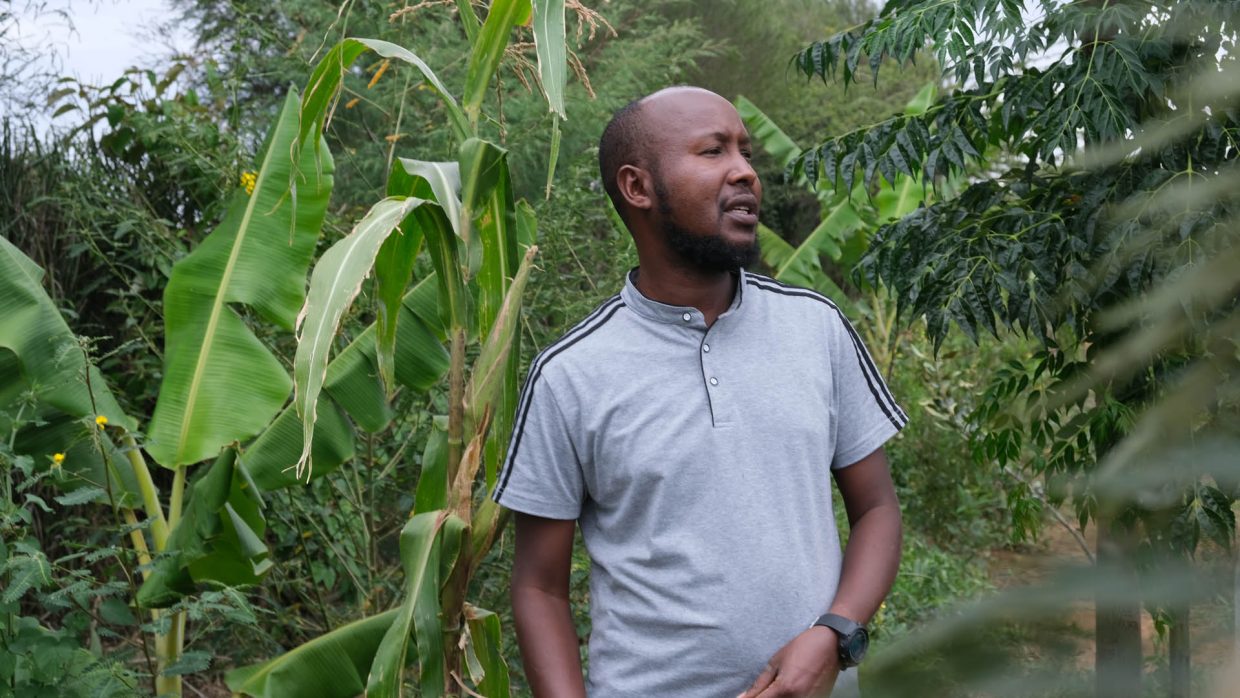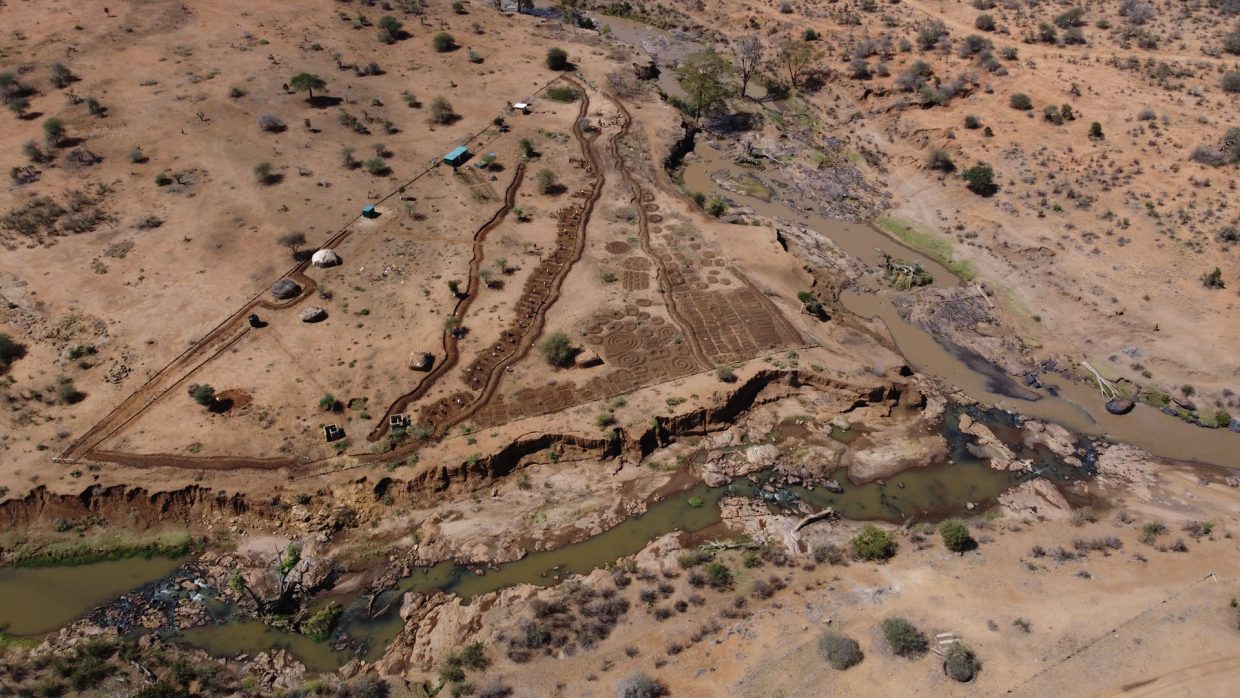Water scarcity is an increasing problem in Europe, while many regions around the world are already experiencing water stress. Food production is often identified as a major contributor to water scarcity. It is, therefore, essential that we learn from each other to reduce water stress, even in areas where supplies are currently abundant.
During our farm visits, we have seen areas that were hit hardest by water scarcity, in countries like Jordan and Kenya.
It didn’t take much research to realise that we’ve been so passive in our farming approach: water is scarce yet we used no rain harvest.
Rakan Mehyar, from Carob Farm, Jordan
Rakan Mehyar, the owner of a Carob farm in Madaba, Jordan, has faced water stress since he began farming. Madaba has a ‘steppe’ or semi-arid climate with an average annual rainfall of 191 mm a year.
When starting his farming career, Rakan designed his farm to capture and use rainwater as efficiently as possible. During an organised farm tour, he explained that the first step in designing a water management system was to identify the highest possible altitude on the farm.
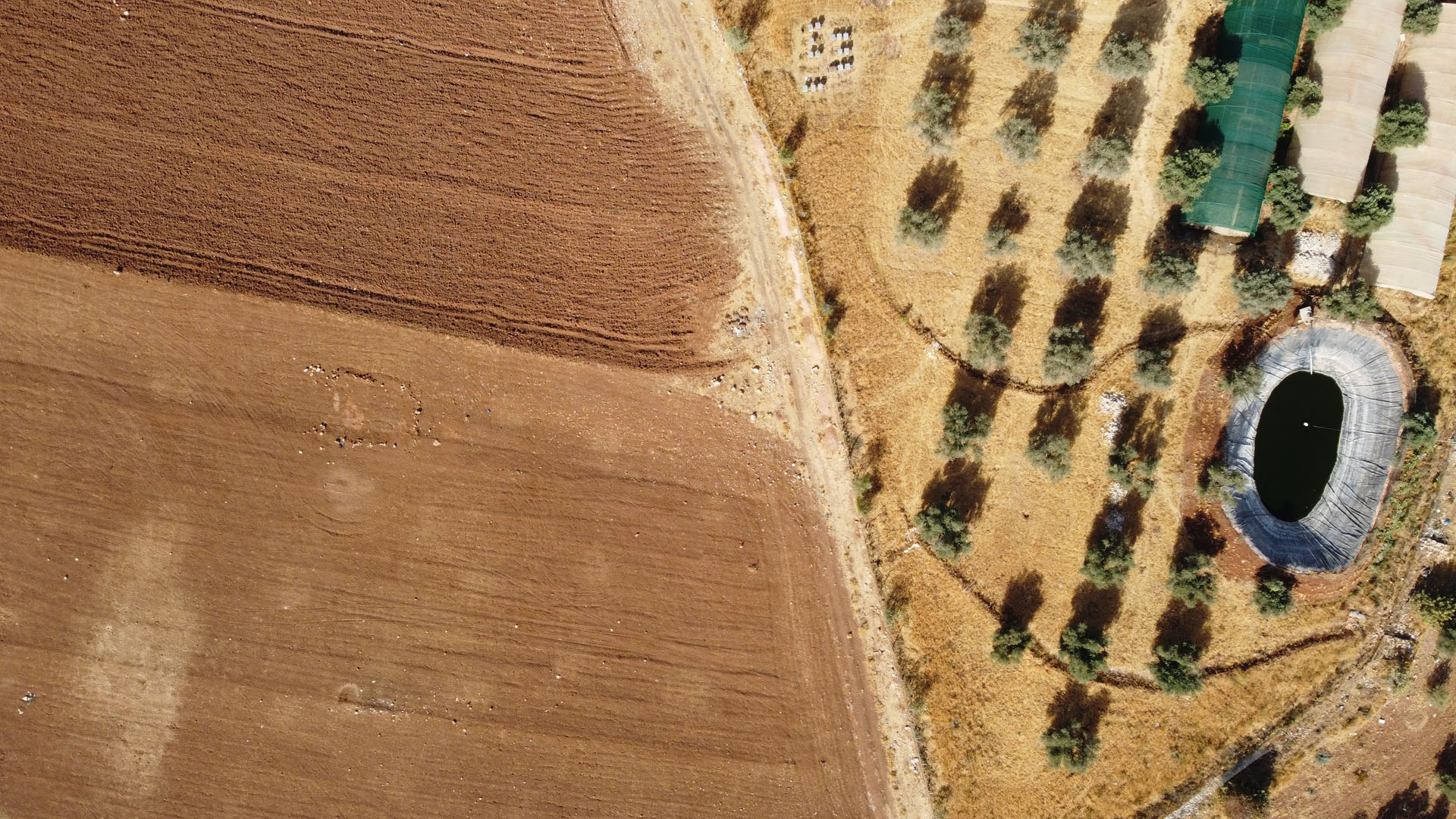
Slowing down the water flow
Rakan has slowed the water with rocks to diffuse its energy and used pipes to divert the flow. Swales then spread the water through fields which are bordered by trees. The tree roots help contain the water by acting as natural dams. Rakan highlighted the importance of the trees for the swales’ functioning. As we walk along the trees around the swales he explains that without them, the water would be even more damaging, as it would flow through the swales at high speed. The trees moderate saturation levels, store more water in the soil through their root systems, and help stabilise the landscape, making the soil more resistant to erosion.
Every year when it rains, there’s a natural system that feeds itself and holds the water and creates an eco-system that provides all the services needed for the crops to grow and leaves the soil more fertile then before.
Rakan Mehyar

Asked what the incentives were to start water harvesting, Rakan explained that he had realised winter rainfall was causing serious erosion sweeping away the top soil. This has brought Rakan to the idea to make use of the runoff by building a reservoir to store the water. He started storing rainwater in an above ground sheeted pool. A cheap and relatively simple solution.
Fadoul Kawar, another farmer in the same region, has been practising regenerative agriculture for the past five years. Although his farm is still transitioning to a densely vegetated landscape, the soil health is already significantly better than that of neighbouring fields where overgrazing causes sand columns to form in the sky above the barren fields. In contrast Fadoul’s fields are covered in mulch to help retain moisture and are far darker.
In the first few years, Fadoul planned and designed his field to use rainfall runoff as efficiently as possible. He identified the highest point on the field and designed a water system to channel water to his fields. This water is slowed and filtered through strategically placed then captured in a natural pond which also harvests and stores rainwater.
Being reliant on government water is not only expensive but also not sustainable
Fadoul Kawar, from Jordan
Fadoul is still implementing the work so continues to rely on government water supply, for which he pays 2.5 JOD (£2.80) per cubic metre.
About Cycle to Farms

The journey of Aisha & Lukas started in May in the Netherlands and took them through Germany, Austria, Slovenia, Croatia, Bosnia and Herzegovina, Montenegro, Albania, Greece, Jordan and Egypt marking the completion of phase one and two and the start of phase three of the Cycle to Farms journey. Currently, they are cycling and visiting farms in Rwanda. As they progress, they gain various insights of regenerative farming practices, which they cover in a series of articles.
They visited regenerative farms in various contexts to gain valuable lessons and insights on transitioning to climate-resilient agricultural practices. It gives them a better understanding of how farmers regenerate their land, how to best support regenerative farmers and inspire others to transition to regenerative agriculture.
The farms they visited varied in size, from a few hectares to thousands, and in soil type, from clay to rocky and sandy desert soils. They also had different production systems, such as arable farming, fruit orchards, food forests, and market gardens, and often had a mixed production system.
Despite the diversity of the farms, they all shared a common goal: combatting climate change, strengthening soil health, managing water, and increasing biodiversity. All the farmers Aisha and Lukas visited were solution-oriented and focused on shared principles, while maintaining individual practices and unique business models.
Support Aisha’s & Lukas’s mission on www.cycletofarms.com
Joseph Lentunyoi, farmer at the Laikipia Permaculture Center (LPC) in Laikipia County, Kenya, lives like Rakan and Fadoul in a semi-arid region facing water stress. Joseph’s farm is in Jua Kali, which translates to “fierce sun,” aptly describing the area’s climate. The area usually experiences two warm seasons (January-February and July-October) and two rainy seasons (March-May and October-November) with slight variations of a few weeks. However, climate change has caused water to become increasingly scarce, as rivers and reservoirs rely heavily on rainfall.
We irrigate once a week and use heavy mulching. Under the papaya tree, we grow maize, rosemary, pigeon pea, kale, and use the chop and drop method. We don’t need to bring mulch from elsewhere, because plants around create it and any water that goes here, stays here for a long time.
Joseph Lentunyoi, from LPC, Kenya
To manage water inflow and cope with extreme drought, Joseph has also used swales, sunken beds, mulch and zai pits. The pits are about 25cm wide and 15cm deep and filled with manure and organic fertilisers to help stop water runoff.
Moreover, Joseph and his team focus on planting indigenous trees that are adaptable to drylands, such as Pigeon pea and the African olive. These practices are also used in the model farms to demonstrate possible sustainable production systems. During our visit to Lakiji, we saw one of the model farms located between two big ranches. As we arrived, we met with a pastoralist community of 100 people consisting of various ethnicities, genders, and ages who are new to farming.
Water management in water abundant areas
Often, when we think of water management, we tend to focus on water scarcity rather than the management of water abundance. In Kenya, most farmers we spoke to discussed the scarcity; however, when we met farmers in Kericho County, they spoke of water abundance. They mentioned that there is often too much rainfall, which carries away the topsoil with all its nutrients. Climate change is causing changing weather patterns and unpredictable rainfall. Therefore, farmers in water-abundant areas are also focusing on water-storing methods.
Here in Kericho we have a lot of rain. We are talking about 2500 mm of rain in a year. At times we can reach as high as 60 mm per day of rainfall. You can imagine what then can happen?
Aggrey Simuyu, from Finlays, Kenya
We visited the Finlays farms in Kericho, Kenya which is a 5000 ha conventional farm producing all kinds of tea for export. Due to growing market demand they are now expanding from 10 ha to 250 ha of organic fields. When we spoke to Aggrey Simuyu, the senior production manager at Finlays, he explained that they are now also applying regenerative practices but that their current challenge is the hilly landscape, which results in soil erosion. They found that in areas where the soil is bare, soil fertility is low and crop quality is poor.
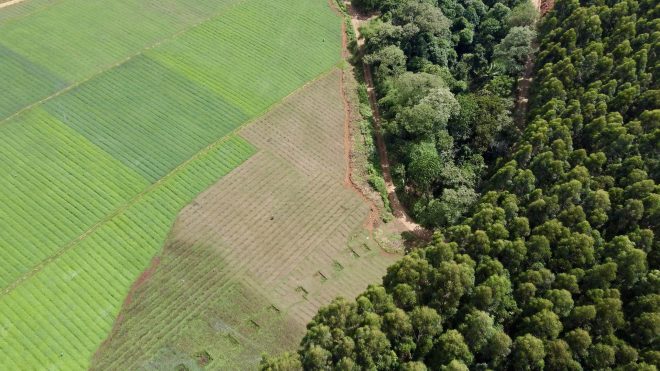
To tackle the issue, Finlays constructed swales along the contours of the fields and trenches. However, they also found that growing cover crops like mint plants, with a low growth pattern and good coverage, had helped. The leaves create shade while the roots benefit with soil structure and limit erosion. Aggrey added that they also planned to add leguminous plants, which would act as nitrogen fixers and cover crops, helping to reduce erosion and provide a mulch.
During our cycling trip in Germany, we visited Hof Lebensberg, a farm located in the North Palatinate region of southwestern Germany. The farm is situated on a lush green hill with a beautiful view. In 2020, Paul and Janine Raabe founded Hof Lebensberg with the goal of creating a globally successful, regenerative agricultural ecosystem.
Their aim is to establish an ecosystem that actively protected the climate, improved soil fertility and water cycles, and produced nutritious food.
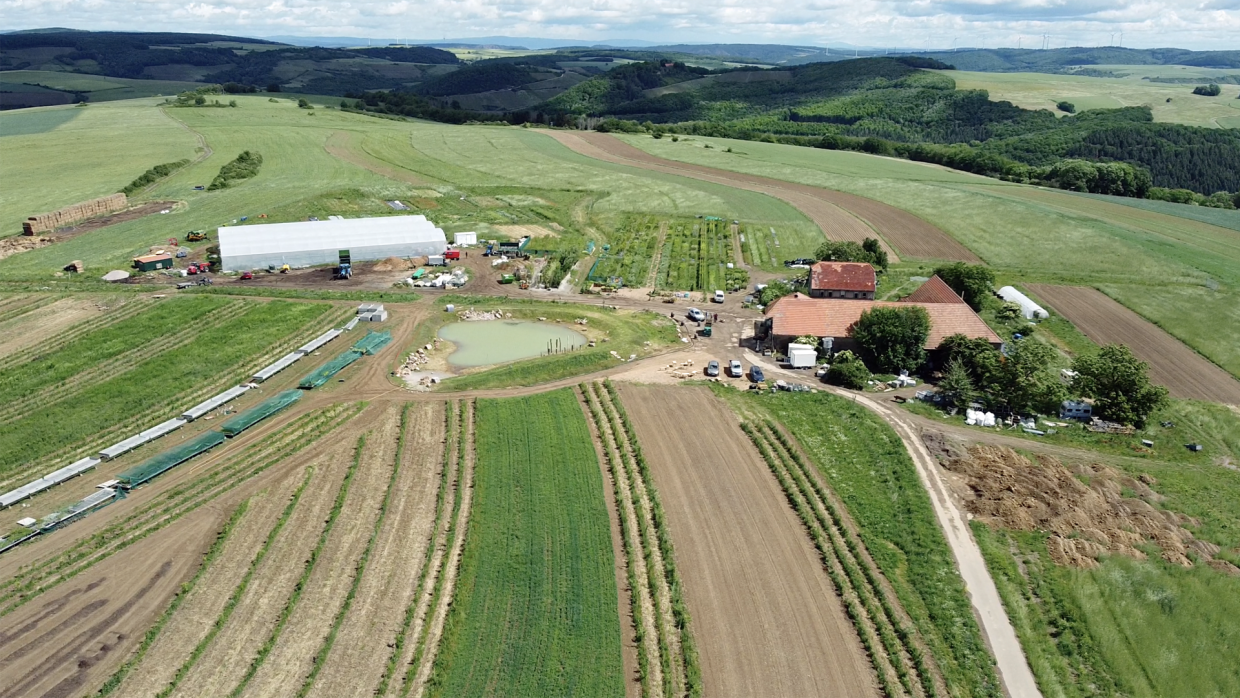
While walking around the 30-hectare farm, we asked Janine about their water usage. She explained that they use an old well on the farm to irrigate their vegetables and young trees. In addition, they have built an 800m³ natural pond using only local clay, without the use of plastic sheeting. This pond is used to store roof surface and precipitation water in the winter and use it in the summer. Like most other farmers we have visited, they worked with Keyline water management to develop a method that improves water infiltration and is aimed at laying out sites that use water effectively.
As we walked through the hedge rows, Janine pointed out that a very important building block of water management is the build-up of humus and the use of mulch material on all the agricultural fields.
Humus and mulch work as a sponge in the soil and can store the water that accumulates on the spot. The sponge effect prevents evaporation and drying out of the soil in the summer. Basically we try to be very careful with water and only irrigate our vegetables and fruit cultivation with drip irrigation or micro sprinklers when there is no other way.
Janine Raabe, from Hof Lebensberg, Germany
Regenerative agriculture and water management
The regenerative agricultural farms that we have visited all have soil health as the heart of their practices. By focussing on soil fertility these practices automatically also improve water management. For instance the use of crop rotation, cover crop and agroforestry are practices that help water to better infiltrate and reduce runoff which helps to improve the water retention in the soil and reduces the flooding and erosion of the soil.
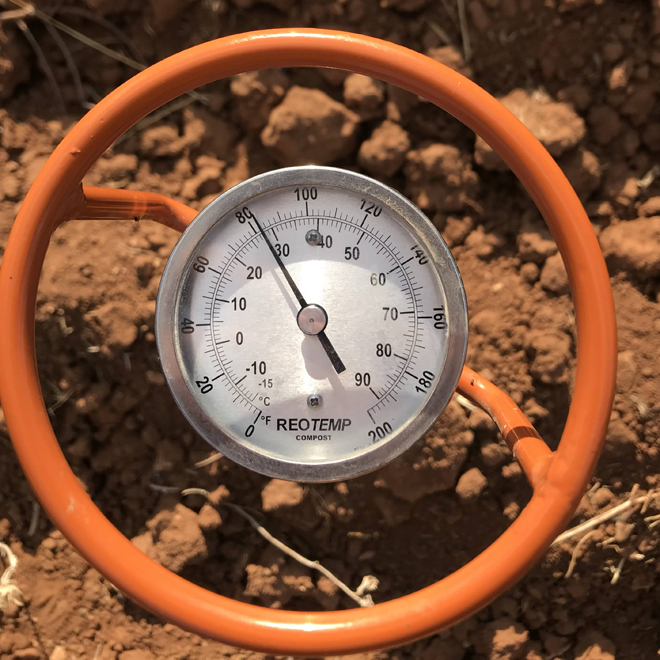

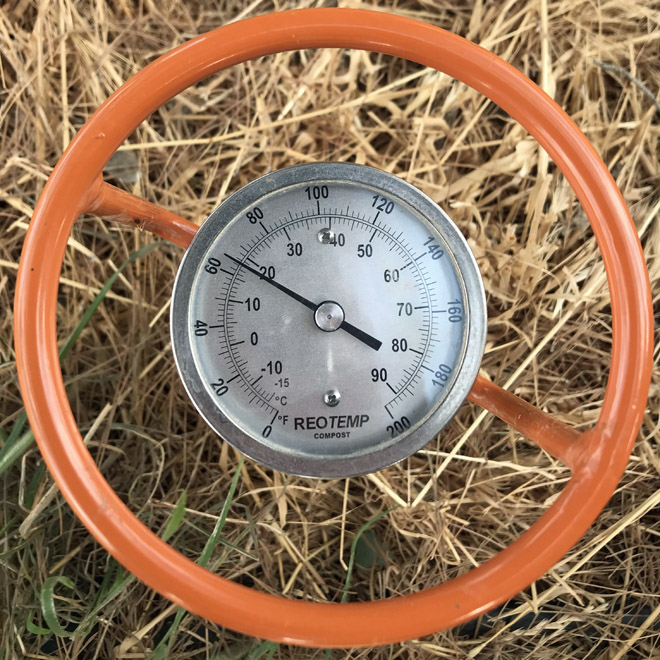
When we were visiting Rakan’s farm it was a scorching hot 30 to 40 °C we were curious about the soil temperature and decided to do a simple soil temperature test. Where we tested soil that has been covered by mulch, soil underneath the agroforestry section as well as soil that was bare on the neighbouring farm. We found interesting although not entirely surprising results. The temperature on the bare field was 28 °C, where the soil was covered with mulch the temperature was 25 °C and the soil under neath the mulch and the agroforestry was 19 °C.

Keeping a constant soil temperature that is not too high and not too low is important for the soil respiration which is an important process that regulates the amount of water that is available to plants. Soil respiration is also closely linked with to growth and activity of soil organisms, which are crucial for maintaining a healthy and fertile soil.
Preparing for a drier future
In response to the ever-increasing water stress faced by many parts of the world, the urgency for immediate and decisive action to prepare for a drier future is increasing. To prepare for this future we have learned from the farms visited. Whether suffering from water scarcity or abundance, a range of practices have been adopted that can help to mitigate the effects of drought.
These practices include improving soil health, reducing runoff and increasing organic matter, which have the potential to drastically reduce the need for irrigation and lead to improved water quality. Additionally, these practices can also help to ensure that future generations are better prepared for the inevitable water shortages that will arise in the coming years.

